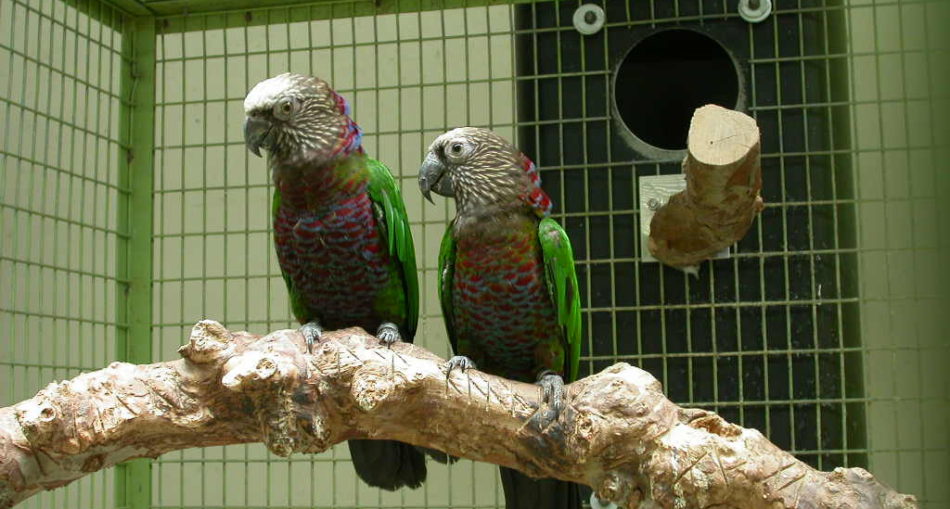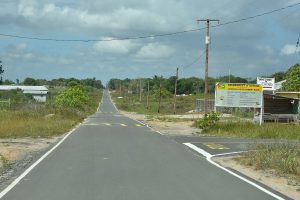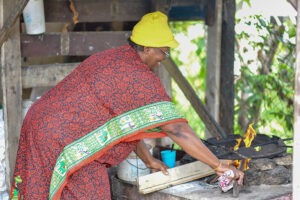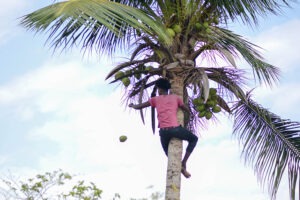When you hear the term Red Fan Parrot, you may be thinking of a typical green parrot but with a fan spread out on its head. However, this is not true as these neck feathers usually lie flat unless the bird feels threatened or provoked. The fan is perhaps the most distinctive feature of the Red Fan Parrot. The fan of bright red, feathers resembling a headdress serves to distinguish it from other species of parrots. But this is not the most eccentric part of the bird, as it is known to be bossy and prone to bouts of rage.
Red Fan Parrots were one of the first documented species of parrots and are known New World parrots. The scientific name of the Red Fan Parrot is Deroptyus accipitrinus and is the only known member of its genus Deroptyus. However, there is a subspecies of the Red Fan Parrot called the Brazilian Hawk-headed Parrot (Deroptyus accipitrinus fuscifrons). This bird is also known as the Guiana Hawk-headed and the Hawk Headed Parrot. This bird species is native to the Amazon Rainforest of South America and can be found in countries like Guyana, Brazil, Suriname, Columbia, Ecuador Peru, Venezuela, and French Guiana.
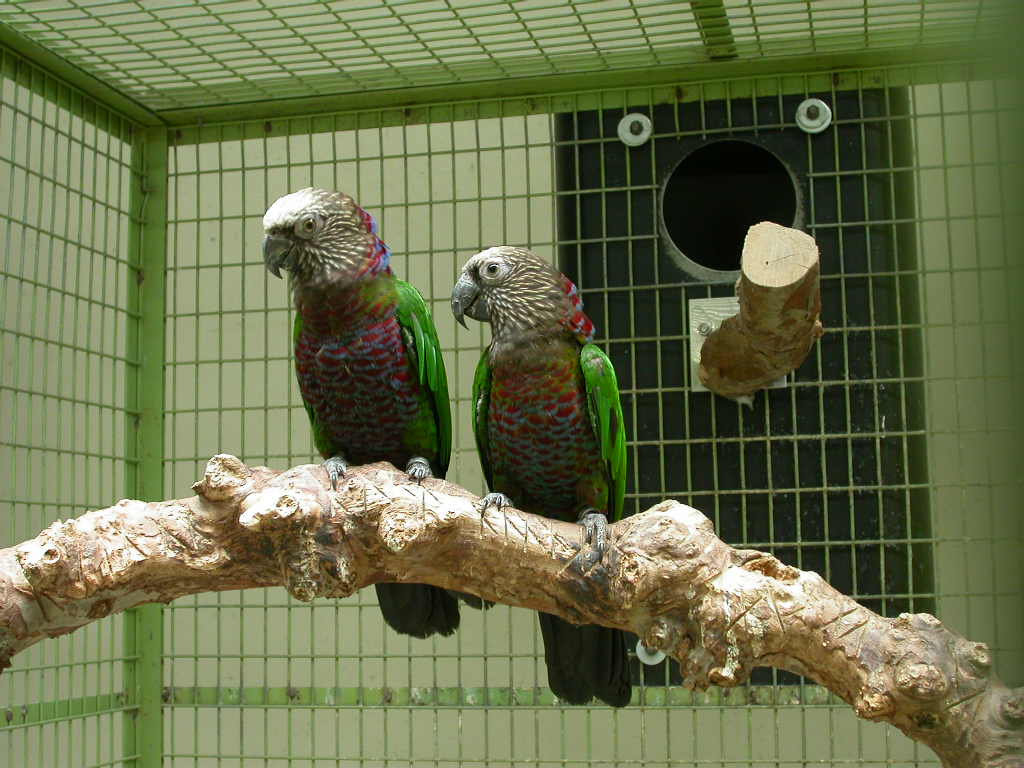
Hawk Headed Parrots – Photo by By TJ Lin – originally posted to Flickr as hawk-headed parrot, CC BY-SA 2.0, https://commons.wikimedia.org/w/index.php?curid=5992074
Features Of The Red Fan Parrot
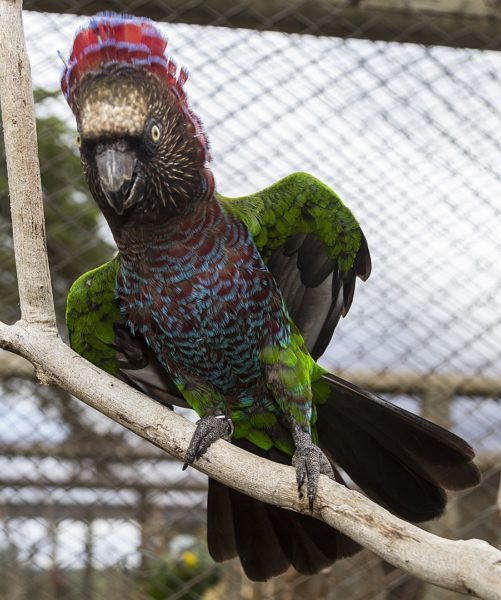
A Hawk Headed Parrot – Photo By Jonathan Wilkins – Own work, CC BY-SA 3.0, https://commons.wikimedia.org/w/index.php?curid=40312253
- Colour – The most distinguishing feature of the Red Fan Parrot is its red, neck feathers lined with electric blue which lie flat on its head. These feathers, resembling a chief’s headdress is raised fanned out, especially when the bird feels threatened or excited. Like most parrots, it has green wings, legs and tail, however, underneath the tail is black. The feathers at its throat are red-brown and streaked with white. Not only that but the end is lined with the same electric blue on its fan or crown. The breast and bellow follow the same pattern.
- Beak & Feet – Beaks are dark grey-black while their feet are grey. Young parrots typically have lighter coloured feet.
- Face & Eyes – The face is dark brown in colour with small white feathers forming streaks across it. The adults have yellow eyes, which is surrounded by a black area while the younger parrots have brown eyes.
- Length & Weight – Red Fan Parrots are birds that vary in size. They are most often about thirty-five (35) centimetres in length. They weight about ten (10) ounces (0.625lbs).
- Variations – While male and female Red Fan Parrots look the same, some have a single red spot under their tail base.
Scientific Classification Of The Red Fan Parrot
Red Fan Parrot – Deroptyus accipitrinus [Scientific name]
- Kingdom: Animalia
- Phylum: Chordata
- Class: Aves
- Order: Psittaciformes
- Family: Psittacidae
- Genus: Deroptyus
- Species: D. accipitrinus
Habitat Of The Red Fan Parrot
The Red Fan Parrots are prone to living in untroubled or peaceful areas of forests like the Amazon Rainforest-their native habitat. They also live in woodlands or savannahs.
Diet Of The Red Fan Parrot
The diet of the Red Fan Parrot in the wild mainly consists of fruits, flowers, leaves, buds, seeds and nuts. These birds require a lot of Vitamin A. In captive, they can be fed lots of dark greens and orange fruits and vegetables including peaches and sweet potatoes. Their diet needs to include fruits and grains.
Behaviour of The Red Fan Parrot
Red Fan Parrots in the wild congregate in small groups of about twelve (12), in pairs or can be found alone.The adults are strong-willed birds, sometimes very aggressive even to the same species and their mates. In most cases, they have nasty tempers and may be difficult to handle. However, they still bond with caretakers and owners but require patience and firmness. Their complicated personality and behaviour vary from parrot to parrot since some make great pets. The juvenile parrots are relatively tame or submissive.
When alone, these birds are normally quiet but are capable of kicking up a ruckus with pitched claws, sharp whistles and high pitched screens when they are angry. They occasionally whisper and made sounds, copying human language.
Reproduction Of The Red Fan Parrot
The Red Fan Parrot mate during the months of January and December. The mate for life makes its nest in the hoes of tree stumps and trees. They normally lay about two to three (2-3) eggs after a period of twenty-six (26) days. While the female incubated the egg, she is taken care of by her mate. In the wild, the young parrots begin to fledge or develop wing feathers when they are about ten (10) weeks of age.
6 Facts About The Red Fan Parrot
- The Red Fan Parrot (Deroptyus accipitrinus) is the only known member in the genus, however, there is a subspecies called the Brazilian Hawk-headed Parrot (Deroptyus accipitrinus fuscifrons).
- They were among the first parrots discovered and described in the 1750s.
- They are aggressive birds-even ruthless, for males may kill his mate and their offering if they are living in captivity.
- These unique birds are quite expensive, with the females being much rarer and thus costing more.
- The average lifespan of this parrot is forty (40) years in captivity.
- Also known as Hawk Head Parrots these creatures can learn to whisper and mimic human speech. Like a child, they often complain and make loud noises when they don’t get what they want.
The Red Fan Parrot In Guyana
Red Fan Parrots are well known for their boisterous behaviour and their easily distinguishable headdress. These birds either live alone, in small groups or with their mate. They live in tropical forested areas, thriving on the local fruit. If you’re keen on seeing this unique bird, take a trip to North Rupunin and do some birdwatching in the forest near to farms. You can also glimpse these exotic creatures at the Iwokrama River Lodge.
Article References
- https://en.wikipedia.org/wiki/Red-fan_parrot
- https://www.petguide.com/breeds/bird/hawk-headed-parrot/
- https://www.beautyofbirds.com/hawkheadedparrots.html
- https://www.parrots.org/encyclopedia/hawk-headed-parrot
- https://www.kaieteurnewsonline.com/2009/11/29/the-red-fan-parrot/
- https://www.stabroeknews.com/2012/02/12/features/red-fan-parrot/

